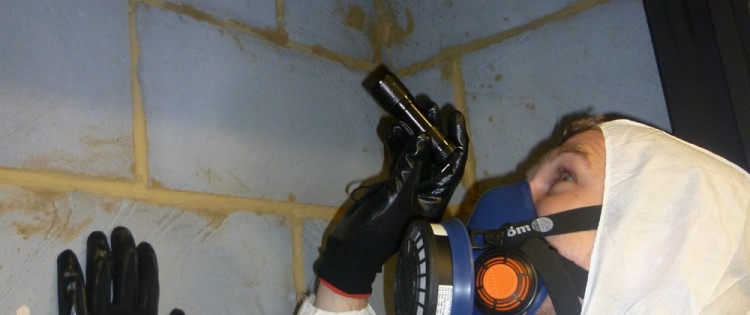If you’re considering buying a property and asbestos is mentioned, many potential purchasers will run a mile. But let’s not be too hasty. In this article, we look at some of the issues with asbestos and why it’s a good idea to have an Asbestos Survey carried out.
What is asbestos used for?
Asbestos is a naturally occurring mineral found in rocks and soil. Made up of six different long, thin fibres, the material has been used since the early 1900s for construction, and in the manufacture of maritime, industrial and commercial products. Asbestos is a great thermal insulator, is highly flexible and provides good resistance to heat, electricity and chemicals.
Where can asbestos be found?
When it comes to building and construction, asbestos can be found in the following places in buildings:
• Wall and attic insulation material
• Roof shingles
• Exterior wall cladding
• Old drainpipes and guttering
• Pipe lagging and other heat resistant fabrics
• Vinyl floor tiles
Why is asbestos dangerous?
When disturbed, damaged or roughly handled, the fibres that form asbestos can break into tiny pieces, or hairs, that are released into the air. These are too small to see, but are easily breathed in through the nose and mouth, where they can enter the lungs and can cause serious health problems.
Asbestos-related diseases don’t affect people immediately; thy usually take years to develop, and once diagnosed, it’s often too late to do anything. The fibres cause various diseases that can be fatal, including
• Pleural thickening and asbestosis (severe scarring of the lungs)
• Mesothelioma and other forms of asbestos-related lung cancer
The danger from asbestos exposure shouldn’t be underestimated. Currently, around 5,000 people die each year from asbestos-related diseases.
What does the law say?
In accordance with Regulation 4 of the Control of Asbestos Regulations (CAR 2012), if you own, inhabit, or manage a property, you have a legal obligation to assess and control the risk from asbestos containing material, or ACM. The law requires you to take all reasonable steps to identify ACM, by presuming the existence of asbestos until proven otherwise.
If asbestos exists in the property, then you are required to maintain an asbestos register which must specify exactly where the ACM is located and what risks its presence poses. (Note: In most cases, if the ACM is not disturbed or damaged, it can remain in situ.)
Asbestos Surveys
Asbestos Surveys are required for any construction work (demolitions, alterations, additions or repairs) scheduled for any buildings built before 1 January 1991. This survey should be undertaken by a specialist Asbestos Surveyor, such as Crucial Environmental, so that you’ll be compliant with the Control of Asbestos Regulations (CAR 2012).
An asbestos survey needs to be conducted if work on any of the materials specified in Workplace Safety and Health (Asbestos) Regulations is to be undertaken. A survey will not be necessary if there is documented proof that the materials do not contain asbestos. The specified materials in the regulations are:
• Fire protection boards, walls, doors and panels
• Cabling penetration insulation
• Sprayed insulation
• Gaskets
• Refractory linings
• Thermal insulation material of boilers, pipes and pressure vessels and process vessels
Non-domestic premises surveys
At all times, owners of offices, shops, or industrial buildings are required to have an Asbestos Management Survey in place. After locating any ACMs in the building, their condition is assessed and a recommendation made to ensure the safety of people working in the building.

Where asbestos is found, it may not have to be removed, but must be monitored and its location specified so it remains untouched and undisturbed. This type of survey has to be renewed annually, but it may need to be undertaken more often if the asbestos is showing signs of deterioration.




